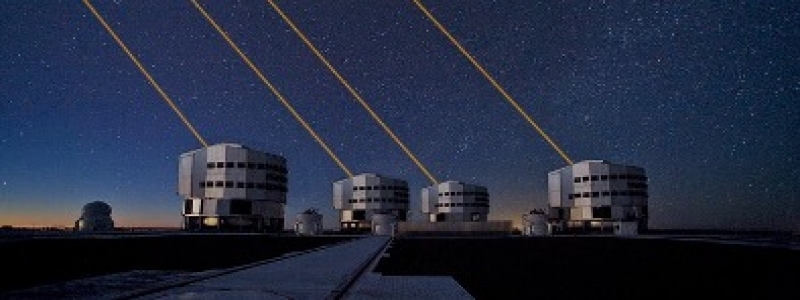Wide-astrometry mode with GRAVITY at the Very Large Telescope Interferometer
Context
Optical/infrared interferometry with VLTI/GRAVITY has led to ground-breaking results, in particular for the study of the supermassive black-hole in the Galactic Center. These breakthroughs rely on the ability of GRAVITY to perform phase-referenced observations and narrow-field astrometry with a few tens of micro-arcsecond precision - a unique observing capability in high-angular resolution astrophysics.
The performances of GRAVITY are currently being improved by orders of magnitude within the GRAVITY+ project. In particular, one key development is the implementation of a wide-field mode with GRAVITY - so-called GRAVITY-Wide mode. In this mode, it becomes possible to perform observations of astronomical targets up to 30” separation from a reference star, opening up the sky to faint targets and extragalactic science, using milli-arcsecond imaging capability and spectro-astrometry.
The next step would be the development of a new metrology mode in GRAVITY-Wide, in order to combine astrometry with this wide-field mode. This would open a new range of science currently not accessible from ground- and space-based observatories, from the study of black-hole physics, microlens, or exoplanets.

Goal
The goal of the PhD is the development of a metrology mode for GRAVITY-Wide in order to enable narrow-angle astrometry up to 30” separation with VLTI/GRAVITY.
The PhD plan would include the following activities e.g:
- design study and/or adaptation of the metrology system of GRAVITY, including: detector upgrade, optical design of the VLTI laboratory beam-train, development of the optimal modulation technique for the metrology.
- experimental work in Paranal at VLTI: implementation and deployment of the system
- error budget and performance validation to validate the accuracy of the system and assess its performances for astrometry observations
- data analysis of the metrology performances
- publication in scientific or engineering journals
Required skills
The required skills involve a background in physics, optical or electrical engineering, photonics, laser physics. Experimental background in the laboratory and with instrumentation would be an asset.
Supervisors: F. Delplancke-Ströbele (ESO) in collaboration with G. Bourdarot and T. Shimizu (MPE).
